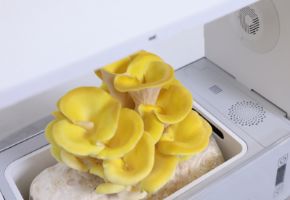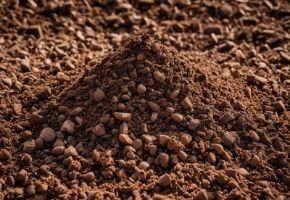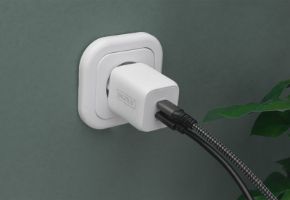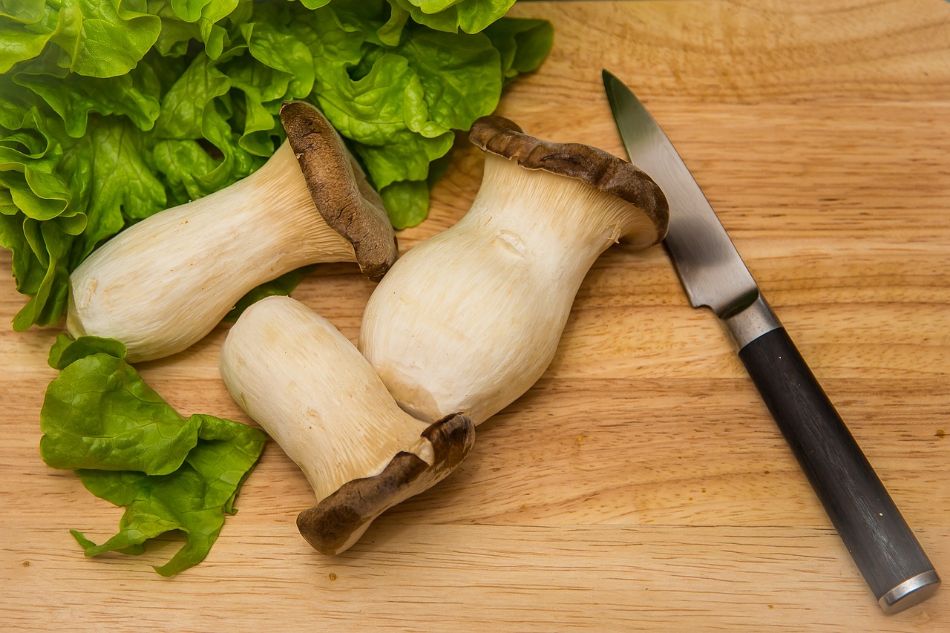The Pleurotus Eryngii is one of the most sought-after and appreciated mushrooms on Italian tables. It lends itself very well to the creation of many recipes, let's try to discover today the main characteristics of this wonderful product...
Taxonomy and classification
The Pleurotus eryngii, commonly known as king trumpet mushroom or eryngii mushroom, belongs to:
- Kingdom: Fungi
- Phylum: Basidiomycota
- Class: Agaricomycetes
- Order: Agaricales
- Family: Pleurotaceae
- Genus: Pleurotus
- Species: P. eryngii
Morphological characteristics
From a physical point of view, the Pleurotus Eryngii has specific characteristics in its conformation.
Cap
Also known as pileus, it is the upper part of the mushroom. In the case of the king trumpet mushroom, we find characteristics that distinctly set it apart from others in the Pleurotus family.
- Size: diameter ranging from 4-15 cm
- Shape: convex when young, then plano-convex to almost flat
- Color: from gray-brown to light brown, sometimes with beige shades
- Surface: smooth, slightly velvety to the touch
- Margin: thin, initially inrolled, then spread out
Hymenophore
The hymenophore is the area of what is commonly called a mushroom that bears the hymenium. The hymenium consists of the set of microscopic cellular elements, fertile with reproductive functions, sterile with various structural functions.
- Gills: decurrent on the stem
- Color: white-cream
- Arrangement: dense and anastomosed
- Consistency: elastic
Stem
Also known as stipe, it is the part on which the cap rests. It can be short, medium, long, slender, ventricose, obese, cylindrical, bulbous, flexuous, rooted, solid, hollow, central, lateral, eccentric. It may present the same color (i.e., "with cap color") or different from that of the cap. Let's see what characteristics we find for the Pleurotus Eryngii...
- Size: 3-10 cm in height, 1-3 cm in diameter
- Shape: cylindrical, often eccentric
- Color: whitish
- Consistency: fibrous and fleshy
Habitat and distribution
The Pleurotus eryngii preferably grows:
- On dead roots of Eryngium campestre (calcatreppola)
- In calcareous soils
- In Mediterranean and steppe areas
- During spring and autumn
- Distribution: Southern Europe, North Africa, Central Asia
Cultivation
The Pleurotus Eryngii prefers cool temperatures to fruit, but let's see below all the details related to the optimal conditions that allow for the best cultivation...
Optimal environmental parameters
- Temperature: 15-20°C for fruiting
- Relative Humidity: 80-90%
- Lighting: moderate indirect light
- CO₂: less than 1000 ppm
Growth substrate
Every mushroom needs an appropriate soil, not all substrates are optimal for the growth of the king trumpet mushroom, it indeed requires:
- Straw of cereals
- Wood chips
- Nitrogen supplements
- Optimal pH: 6.5-7.0
Nutritional value
The Pleurotus Eryngii has decent nutritional properties and a low caloric impact, indeed we find per 100g of fresh product:
- Proteins: 3.6g
- Carbohydrates: 6.2g
- Fats: 0.4g
- Fibers: 2.3g
- Calories: 43 kcal
Bioactive components
The main bioactive components present in the mushroom also denote properties that support the body, indeed we have the presence of:
- β-glucans
- Ergosterol
- Phenolic compounds
- Ergothioneine
- Immunostimulant polysaccharides
These components ensure that the Pleurotus Eryngii exhibits antioxidant activities, immunomodulatory properties, anti-inflammatory effects, cholesterol regulation.
Organoleptic characteristics
The palate also wants its share! What characteristics make the king trumpet mushroom such a prized ingredient for the most popular recipes?
This mushroom has a delicate and sweet flavor, an intense aroma, flesh with a firm and fleshy consistency, a medium persistence fragrance but above all particular fungal and earthy aromatic notes.
Storage and use
Once harvested, the king trumpet mushroom can be stored:
- in the refrigerator: 5-7 days at 4°C;
- dried: maximum temperature 35°C;
- frozen: after blanching;
- vacuum-packed: increases shelf-life.
Phytosanitary aspects
The main pathogens that can attack the Pleurotus Eryngii, preventing its proper development, are Trichoderma spp., Pseudomonas tolaasii, some competing mycelia, mites, and insects.
For this reason, it is always important to sterilize the substrate, constantly monitor the environment, conduct biological checks, and always follow correct hygienic practices.
Tradition and innovation in a mushroom
This mushroom represents an important example of how Mediterranean mycological tradition has evolved into a modern food and nutritional resource, combining cultural, scientific, and economic aspects in a single organism of great interest.
The fungal kingdom is a universe in continuous evolution, with new scientific discoveries emerging every year about their extraordinary benefits for gut health and overall well-being. From now on, when you see a mushroom, you will no longer think only of its taste or appearance, but of all the therapeutic potential it holds in its fibers and bioactive compounds. ✉️ Stay connected - Subscribe to our newsletter to receive the latest studies on: Nature offers us extraordinary tools to take care of our health. Fungi, with their unique balance between nutrition and medicine, represent a fascinating frontier we are only beginning to explore. Continue to follow us to discover how these extraordinary organisms can transform your approach to well-being.Continue your journey into the world of fungi










